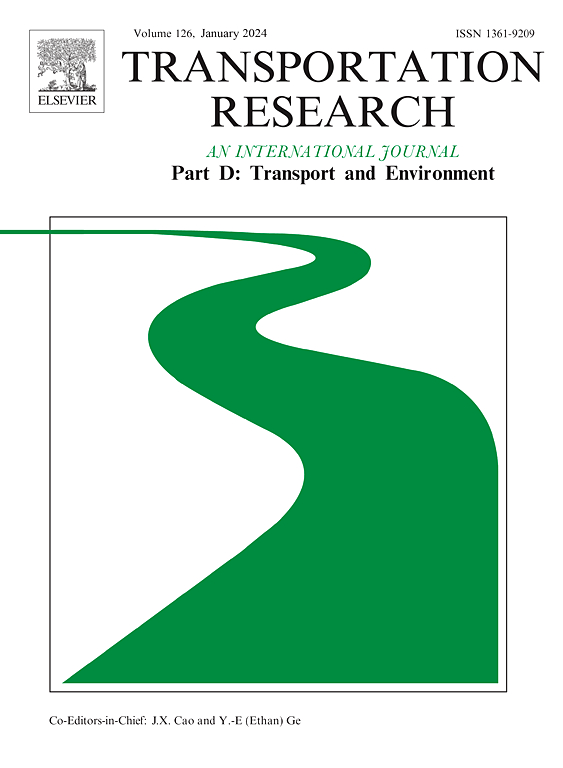Analyzing disparities in app-hailed travel during extreme heat in New York City
IF 7.3
1区 工程技术
Q1 ENVIRONMENTAL STUDIES
Transportation Research Part D-transport and Environment
Pub Date : 2025-03-04
DOI:10.1016/j.trd.2025.104650
引用次数: 0
Abstract
To understand extreme weather effects on travel behavior, we examine changes in New York City app-hailed travel during extreme-heat days and estimate whether such changes vary across low- and high-income neighborhoods. We use trip records for July 2019, when several heat-related messages were issued by the National Weather Services, and find that daily ridership was six to nine percent higher on days when heat messages were issued than on matching weekdays in the same month. Our fixed effects regression models estimate that for median income neighborhoods afternoon peak-hour ridership was 1.7 to 3.2 rides higher per 1,000 people during the heat events than on matching weekdays in the same month. This effect increased by an additional 0.5 to 0.6 rides per 1,000 people for every $10,000 increase in average neighborhood per capita income, suggesting that higher income travelers increased trip frequency at a higher rate than lower-income travelers.
分析了在纽约市极端高温期间,应用程序受到欢迎的旅行差异
为了了解极端天气对旅行行为的影响,我们研究了纽约市在极端高温天气中应用程序的旅行变化,并估计这种变化是否在低收入和高收入社区有所不同。我们使用了2019年7月的旅行记录,当时美国国家气象局发布了几条与高温有关的信息,发现在发布高温信息的日子里,每天的客流量比同月的工作日高出6%至9%。我们的固定效应回归模型估计,对于中等收入社区,在炎热天气期间,下午高峰时段每1000人的乘坐次数比同月的工作日高出1.7至3.2次。社区平均人均收入每增加1万美元,这一效应就会使每1000人增加0.5到0.6次骑行,这表明高收入旅行者比低收入旅行者增加出行频率的速度更快。
本文章由计算机程序翻译,如有差异,请以英文原文为准。
求助全文
约1分钟内获得全文
求助全文
来源期刊
CiteScore
14.40
自引率
9.20%
发文量
314
审稿时长
39 days
期刊介绍:
Transportation Research Part D: Transport and Environment focuses on original research exploring the environmental impacts of transportation, policy responses to these impacts, and their implications for transportation system design, planning, and management. The journal comprehensively covers the interaction between transportation and the environment, ranging from local effects on specific geographical areas to global implications such as natural resource depletion and atmospheric pollution.
We welcome research papers across all transportation modes, including maritime, air, and land transportation, assessing their environmental impacts broadly. Papers addressing both mobile aspects and transportation infrastructure are considered. The journal prioritizes empirical findings and policy responses of regulatory, planning, technical, or fiscal nature. Articles are policy-driven, accessible, and applicable to readers from diverse disciplines, emphasizing relevance and practicality. We encourage interdisciplinary submissions and welcome contributions from economically developing and advanced countries alike, reflecting our international orientation.

 求助内容:
求助内容: 应助结果提醒方式:
应助结果提醒方式:


